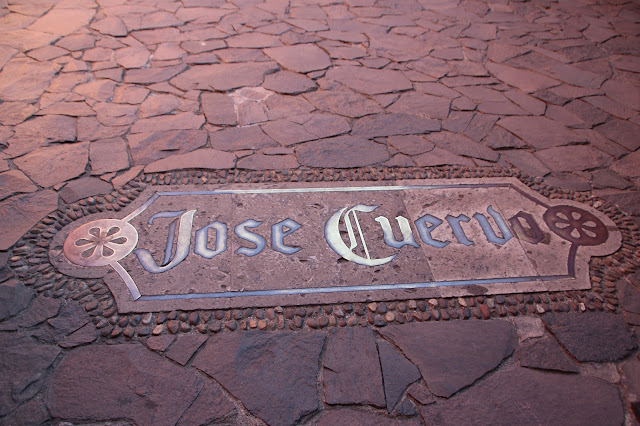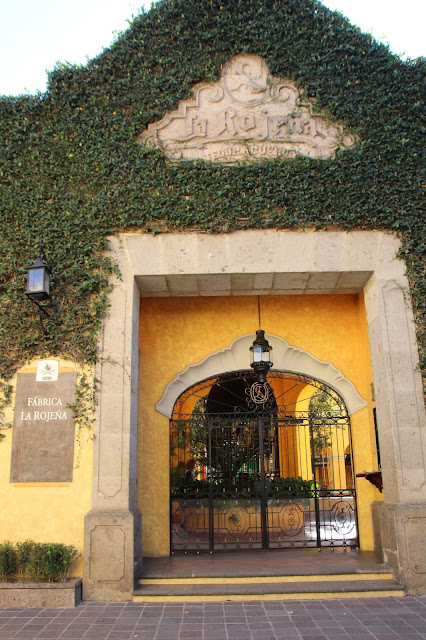Tequila was first produced in the 16th century near the location of the city of Tequila, which was not officially established until 1666. The Aztec people had previously made a fermented beverage from the agave plant, long before the Spanish arrived in 1521. When the Spanish conquistadors ran out of their own brandy, they began to distill agave to produce one of North America's first indigenous distilled spirits.
Some 80 years later, around 1600, Don Pedro Sánchez de Tagle, the Marquis of Altamira, began mass-producing tequila at the first factory in the territory of modern-day Jalisco. By 1608, the colonial governor of Nueva Galicia had begun to tax his products. Spain's King Carlos IV granted the Cuervo family the first license to commercially make tequila.
Don Cenobio Sauza, founder of Sauza Tequila and Municipal President of the Village of Tequila from 1884–1885, was the first to export tequila to the United States, and shortened the name from "Tequila Extract" to just "Tequila" for the American markets. Don Cenobio's grandson Don Francisco Javier gained international attention for insisting that "there cannot be tequila where there are no agaves!" His efforts led to the practice that real tequila can come only from the State of Jalisco.
Mexican laws state that tequila can only be produced in the state of Jalisco and limited municipalities in the states of Guanajuato, Michoacán, Nayarit, and Tamaulipas Tequila is recognized as a Mexican designation of origin product in more than 40 countries. It is protected through NAFTA in Canada and the United States, through bilateral agreements with individual countries such as Japan and Israel and has been a protected designation of origin product in the constituent countries of the European Union since 1997.
We took a bus tour to Tequila and it was a pretty good tour as far as tours go.
Some sights as we drove into town.
Our first stop is Tres Mujeres tequila, named after the "Three Ladies" most precious to the Melendrez family. Today, the family is one of the largest growers of blue agave with over 8 million agave plants.
For over 65 years, Jesus Sergio Partida has been growing millions of their renowned blue agave plants for well-known tequila manufacturers. Over the years, the family decided to create Tres Mujeres Tequila using their most select blue agave. Their mission is to fill a void in the premium tequila market for a 100% blue agave, 100% natural, quality tequila that is affordably priced.
Pretty bottles!
Entering the Cava.
Private bar in the cave.
What?? No tasting???? We then are bused to the cactus fields.
That's better, tastings.
And toasts!
Enjoy your Tequila with friends!
Arriba (glasses up)
Abajo (glasses down)
Al Centro (glasses to the front – health for all of you!)
Y Pa’dentro (inside) as the end and drink your Tequila!
We also sampled Rompope (rum-po-pe) is a Mexican style Egg Nog conceived in a convent during the Spanish Colonial Era in the city of Puebla. This drink is not originally from Mexico but it has been adopted by the Mexican people as a traditional drink and adapted into traditional customs and practices. Conventionally, Rompope is made with eggs, rum, vanilla, milk, sugar and almonds and is thick with a yellow color due to the egg yolk.
There is an old story that sister Edugives was the only nun at the convent authorized by the church to make and taste the Rompope, which was only used for special occasions. She went to great lengths to convince the convent Mother to let other nuns enjoy this delicious drink. She argued that one small cup a day wasn’t bad for them and, one day, she finally succeeded. The nuns became so efficient at making Rompope, they were able to sell it commercially and raise money for the convent, ensuring its spread and guaranteeing it the popularity it still holds today.
Click here to see the chapel at the distillery.
After lunch we are taken into town where we have free time to ourselves.
Jose Cuervo built Cuervo Mundo (Cuervo World) about 10 years ago and the estate fills several city blocks with beautiful showrooms, meeting rooms, courtyards and more. Outside Jose Cuervo's store, the Raven mascot.
Stuffed ravens.
Definitely no shortage of tequila shops.
The heart of the city, as is true in most Mexican towns, is based around the central plaza and the main cathedral Iglesia Santiago Apostal.
All this talk of Tequila reminded me that we had attended a Tequila tasting in October in Palm Springs.
In 2014 we visited Los Osuna in Mazatlan.
Also in 2014 we learned to make the perfect Margarita!

Our World Tuesday





















































A rich variety in these shots. Admittedly, I don't drink!
ReplyDeleteOff to set up a still, Jackie! Now where will I get some of those pretty bottles? :) Many thanks for your company again. Enjoy the rest of your stay!
ReplyDeleteWhat a fascinating trip for you and great photos ~ Favorite is the Raven Mascot ~
ReplyDeleteHappy Week to you ~ ^_^
Wonderful shots. You have covered the place very well by walk.
ReplyDelete